Growing currants on a trunk

For some time now, not only roses and other ornamental crops have been grown on the stem, but also fruit and berry bushes, for example, cotoneaster, gooseberries, currants. It is about growing currants on a stem that will be discussed, as well as how much such a method is preferable to the traditional one.
Advantages and disadvantages
The main advantage of currants on a trunk is the lack of contact with the soil and greater access to the shoots of sunlight and air currents. In addition, the tree culture is more compact and almost does not take up space on the ground. Placing the crown on the "upper floors" greatly reduces the likelihood of a fungal infection, provides trouble-free care for the root zone and root system.
The tree shape is not only optimal cultivation, but also the ability to turn culture into a full-fledged part of landscape design. If the owner of the site has only a small space at his disposal, then the currants on the trunk are ideally combined with decorative plantings and can become a soloist in a flower bed. It can be dropped off along the driveway or footpath.

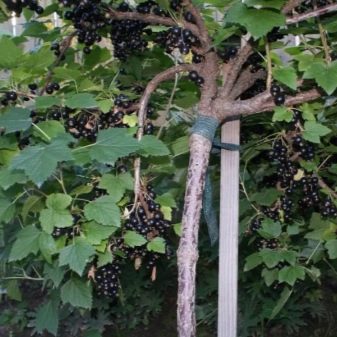
Standard currants look great in large flowerpots, which can be moved if desired, thus changing the geometry of the composition group. Growing berry bushes on a trunk has many positive aspects and allows the owner not only to transform the plot and garden area, but also to attract the attention of neighbors and guests by showing an amazing tree. They look especially beautiful during the technical and physiological ripeness of the fruit, when bright clusters of carmine-red, blue-black or translucent white berries hang from the branches.
Unfortunately, this method is not without its drawbacks. The roots of the tree shrub are less protected from frost and require increased attention during the preparatory work for the winter season. The stem is easy to break, so caring for it should be more gentle than for a powerful shrub.
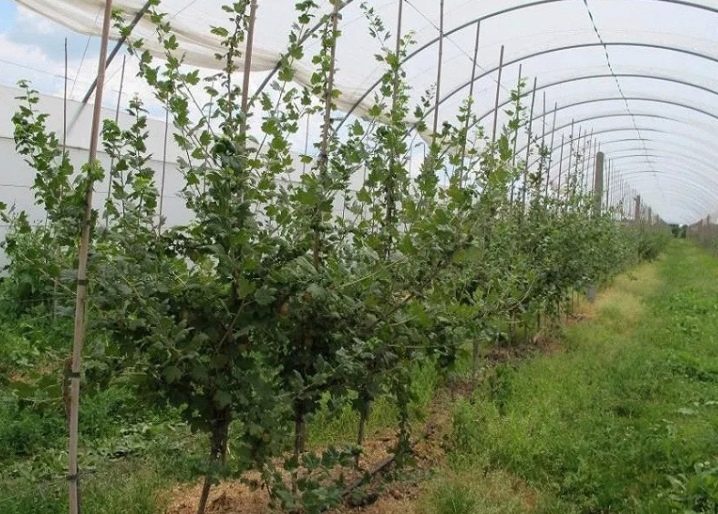
Variety selection
The moment of choosing a variety is always fraught with certain difficulties. First of all, you need to decide on the "modification" of the culture and decide which is preferable: red or black, white or gold. If the purchase of a stem is made for purely utilitarian purposes - to obtain fruits, then everything is simple. What kind of currant the family loves, this is planted. Things are a little more complicated when it comes to decorative use. According to experienced gardeners, all types are good in this regard. However, in terms of the brightness of the colors, they are different, which must be taken into account if the plant is supposed to be used as a design element.
Black currants will look amazing against a white background wall, just like red ones, while they are completely lost against a dark blue or black surface. But golden and white, on the contrary, will only acquire charm and attractiveness, while a light background will completely drown out the colorless and almost transparent berry.
-
Black. It should be noted that her popularity is out of competition, she is always in demand. Differs in good winter hardiness, which explains its ubiquitous distribution. The standard "Universitetskaya", "Sibilla", "Pamyatnaya", "Aist" and "Premiera" showed themselves the best as high-yielding varieties with strong immunity.
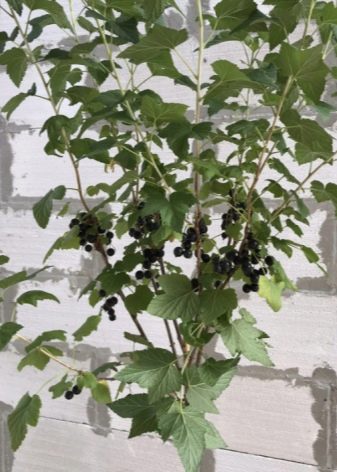
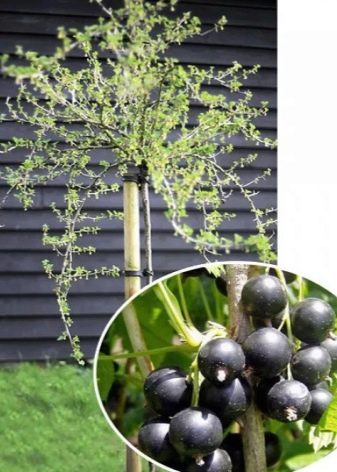
-
Red. This species is even more resistant to cold and stressful weather conditions than black currant. It practically does not react to frost, it has good adaptive qualities. Its growing area is the entire territory of Russia, except for the Arctic. Known standard varieties:
-
Rondom;
-
Viksne;
-
"Natalie";
-
Chulkovskaya;
-
"Red Cross";
-
Titania.
-
The last two varieties are distinguished by especially powerful shoots, belong to the early maturing category, but "Natalie" has high yield rates, good keeping quality of berries and excellent winter hardiness - in this it is considered the leader.
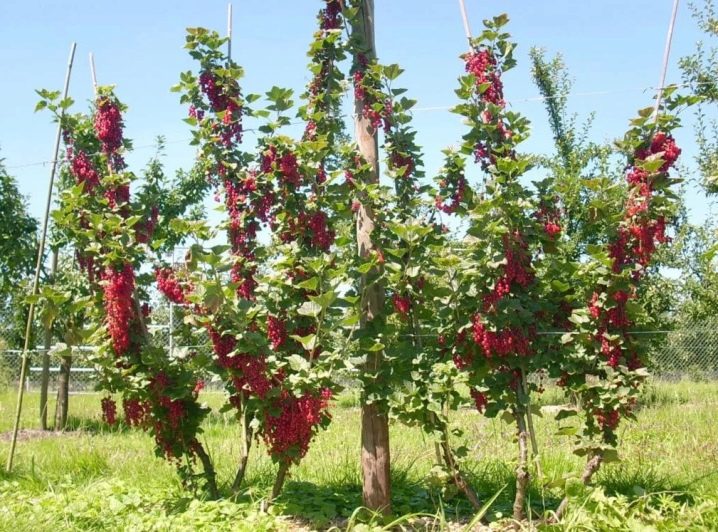
-
White. Of those varieties that are suitable for growing on a trunk, the following are distinguished.
-
"Primus" Czech selection, capable of producing up to 10 kg of selected berries from one bush.
-
"Dessert" it is distinguished by high winter hardiness, high yields and successful resistance to fungal diseases and pests.
-
A variety of white currants - golden - can also be grown on a trunk. For this purpose, use the variety "Imperial Yellow", whose shoots reach two meters in height, are characterized by stronger branches in comparison with black varieties. This variety can be used as a hedge or planted along a through fence as a human shield and screen from prying eyes, dust, noise.
-
Before deciding on a particular variety, you need to make sure that it is suitable for the climate and is able to withstand winter conditions, because tree varieties are more vulnerable. This will help not only avoid unnecessary financial costs, but also save you from wasting time if it suddenly turns out that the plant is not able to survive the local winter.
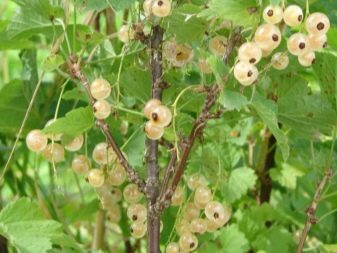
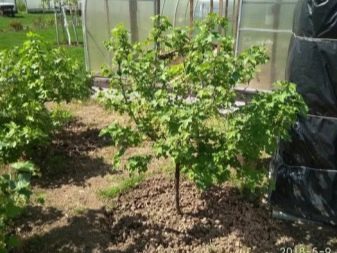
Landing nuances
Getting a healthy, beautiful and highly productive currant stem largely, if not completely, depends on compliance with agrotechnical requirements. The level of illumination, soil fertility, its structure and composition play an important role. And, of course, the care of the seedling and the subsequent care of the adult plant, which will be needed throughout its entire life. To begin with, you should choose a place with a sufficient level of lighting - the more sunlight the berry gets, the sweeter it will be. This factor will have to be taken into account also when the purpose of cultivating a trunk is to solve design problems.
Even if the location is ideal from this point of view, permanent shading will act negatively. As a result, a nondescript and frail plant will grow, which will not be able to decorate the composition.
It is necessary to save the future tree from drafts and northern winds, if there are similar problem areas on the site. The soil for the currants should be sufficiently loose and breathable - oxygen access is extremely important for the good condition of the root system. Standard varieties prefer slightly acidic sandy loam soil with peat.
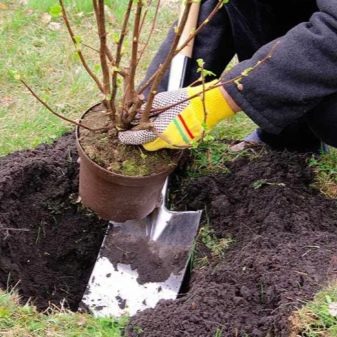
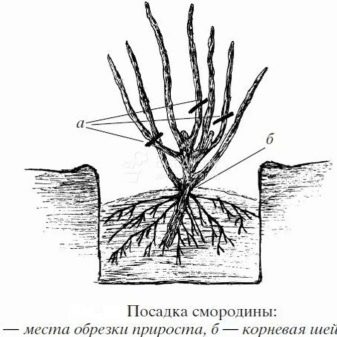
The optimal period for planting young stock:
-
closer to autumn (early days of August) in warm regions;
-
in spring (April-May) in temperate latitudes.
The landing site is prepared in advance, about six months before the event itself. As a rule, it is autumn for spring planting and spring for autumn planting. Six months before transplanting, organic matter (manure or humus) is introduced into the soil for digging.
Hole sizes - 0.5x0.5x0.6 m with an interval between the roots of at least 1 meter, so that the neighbors do not interfere with the development. A closer distance will not allow you to get a beautiful, powerful and spreading crown with a large number of inflorescences and good efficiency. A drainage layer is poured into the pit and a support for the trunk is installed. Excavated fertile land is enriched with complex specialized fertilizers.
When placing a seedling in the ground, remember: the young bush is set at an angle of 45 ° to the surface, while the bole should stand upright.Then the soil is poured into the hole, carefully compacting it around the roots so that no air pockets remain. The near-trunk circle is poured abundantly with warm, settled water and the next day it is loosened or covered with a layer of peat mulch.
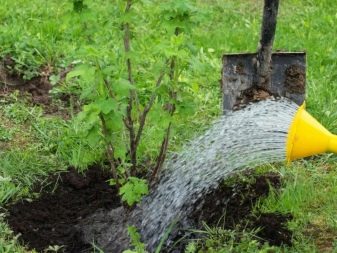
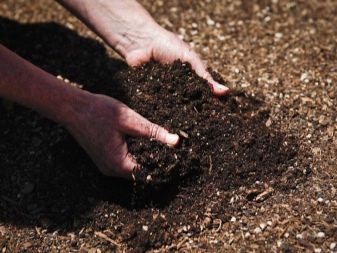
The latter method is preferable, since later the mulch will get rid of:
-
weeding and loosening;
-
fast evaporation of moisture;
-
earthen crust formation.
Young shoots will appear in the next season, and it is imperative to remove them from the stem, clean the root zone, and pinch the shoots on the upper tier. It will take at least 3-4 seasons to grow and form a full-fledged crown, and, perhaps, a little more. It doesn't matter if you have to wait a little, because the result is worth the waiting time, and an amazing and unusual tree will grow on the site. But even then you will have to look after the currants on the trunk every year. Form a crown, pinch the tops of shoots that are too prominent from the total number of shoots, clean the trunk of new branches that will still try to germinate.
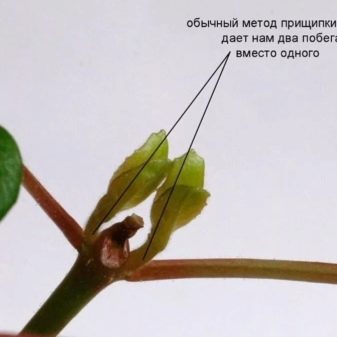
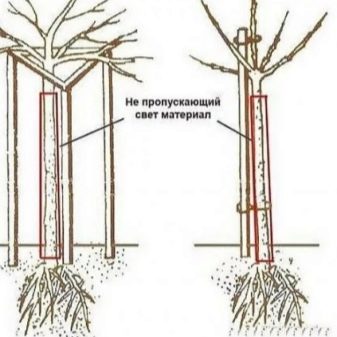
Methods for forming a stem
Anyone who wants to can form a currant in the form of a tree from an ordinary bush with their own hands. There is nothing difficult in this, you just need patience and adherence to some rules. There are two types of growing a crop on a trunk:
-
own-rooted seedlings;
-
on the rootstock.
The procedure is carried out in early spring, before the start of sap flow. In the second case, you will have to vaccinate the scion on the stock.
Self-rooted
In this case, there is nothing complicated, and the method is especially suitable for novice gardeners who are not familiar with vaccinations. The most direct shoot is left on the selected shrub, pinch the top, leaving about 90 centimeters. 4 kidneys are counted from above, all those below are subject to blinding. The processed branch is left, while the rest are completely removed. As soon as the growing season has begun, pinch the lateral shoots. Shoots from the left buds are pinched after 3-5 leaves appear. The procedure is repeated the next year.
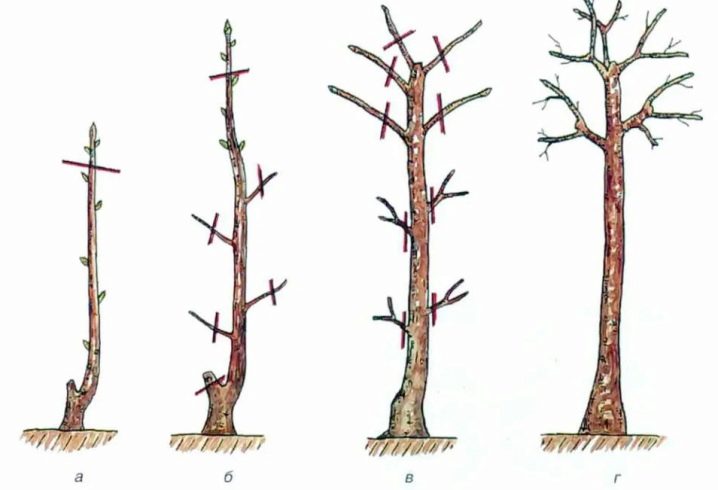
On the rootstock
Rootstock growing is a more sophisticated, modern and efficient way. As a basis, a stock is used, in this case a standard stock, and a graft-graft. The height of the stock should not be less than 80 cm, and the thickness of the top should be less than 0.5 cm. A thinner and weaker stock simply cannot be a good support and donor of nutrients.
The stalk that needs to be grafted should be carefully examined - it should have at least 3-4 living, healthy and high-quality kidneys.
-
On the rootstock stem, all the buds are blinded.
-
On the scion, make an oblique cut with a perfectly flat surface.
-
The same procedure is carried out with the stock, trying to get the same smooth surface on the cut part.
-
The graft is connected to the stock, pressed tightly, carefully combining the slices.
The junction is wrapped with electrical tape or film. A year or two after the procedure on the scion, they begin to pinch the lateral shoots after the formation of 3 leaves. The stem itself must be clean, all emerging shoots, the buds must be cut off.
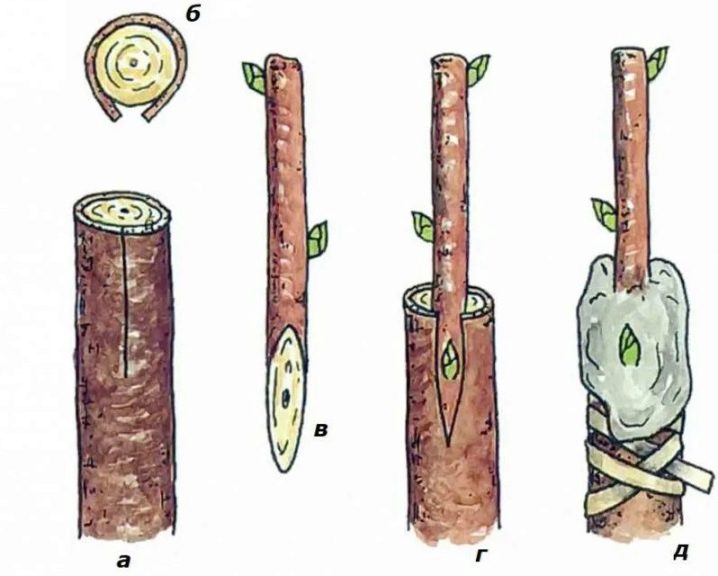
Care
Proper care and sequence of actions will allow you to grow a miniature tree with unusual fruits, because currant berries do not grow on trees. Nevertheless, the owner of such boles will be able to amaze guests with amazing plants, especially during fruiting.
-
Loosening and weeding. Conducted as often as the situation requires. This helps to get rid of weeds, prevent the formation of an earth crust and subsequent cracking of the soil. Mulching near-trunk circles will allow you to get rid of these procedures, help preserve moisture, and slow down the appearance of weeds. Natural material (peat, sawdust) or black agrofibre is used as mulch.
-
Watering. Irrigation is carried out regularly, since currants do not tolerate dry periods, up to dropping the ovaries.Ensuring that the soil in the near-trunk circle is always moistened, water stagnation should not be allowed. In this case, there is a danger of decay of the root system. Weekly irrigation is carried out in moderation, if rainy weather is established, then watering is stopped. In drought, at high temperatures, the frequency of watering is increased. Currants are also watered in the fall, in the absence of precipitation. 1 bush accounts for 30-40 liters of moisture.
-
Top dressing. Fertilization begins in early spring before the start of the growing season. For each bole, 20 g of urea is used. In the summer, the plants are fed with organic matter (infusions of mullein or nettle), mineral compositions containing the entire set of macro- and microelements. In autumn, the trunks are covered with a thick layer of humus.
-
Formation. Pruning for plants grown on a trunk is necessary to maintain the desired shape of the crown and trunk. If this is not done, then the currants will soon return to their natural bush forms. All basal shoots are removed and trimmed, as are the lateral shoots on the trunk. The required length of the branches of the crown is observed, and anti-aging procedures are carried out every 5 years. At this time, all shoots older than 3 years are removed.
Tying is one of the mandatory techniques, since the thickness and flexibility of the stem will not allow it to independently maintain the vertical position and weight of the crown. After all, in fact, this is an ordinary branch, which was forcibly forced to act as the central trunk.
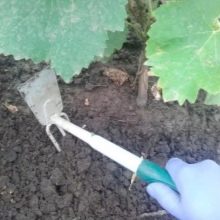
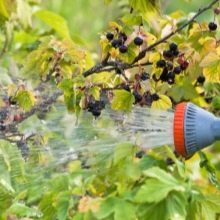
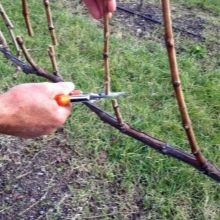
Reproduction
Currants on a stem are propagated by cuttings, and the optimal period for this is mid-summer. The process itself consists of several stages. At the first of them, a suitable branch of the first year is selected. Old, lignified shoots are not suitable for these purposes. For cutting cuttings, use the middle part of the shoot, cutting into pieces with 3-4 buds. A sharp garden pruner that does not crush wood fibers should be used in the work.
The lower part of the cutting should be cut at a 45 degree angle, while the upper cut should be straight. It is advisable to keep the lower edge of the cutting in a solution of "Kornevin" or another root-forming stimulant. For better rooting, it is most correct to use a soil with a neutral composition: a mixture of peat and river sand. In the absence of this, they use garden land. Usually cuttings have a good root system by spring and are ready for transplantation. At the end of the season, pinch the top on the guide at a height of 80-90 cm and remove all the buds, blinding, except for the three or four upper ones.
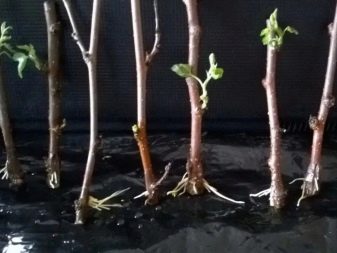
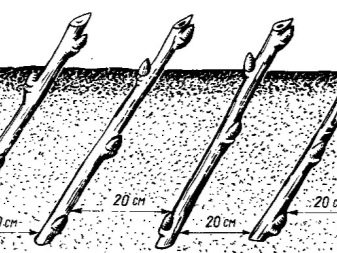
Diseases and pests
The culture has strong immunity and resistance to diseases and pests. However, this does not mean that she is protected from all dangers. Unfavorable weather conditions, lack of nutrients, and considerable age make the plant vulnerable.
The main enemies of the currant:
-
anthracnose;
-
septoria;
-
terry;
-
powdery mildew;
-
goblet rust and others.
To combat them, use Bordeaux liquid, iron vitriol. From pests on currants, spider mites or kidney mites, aphids, glassflies, sawflies and sprout currant gall midges can attack. The most effective way to control pests is with insecticide treatments.
To get a beautiful and unusual plant on your site, a gardener needs to make a lot of effort. But all together they are not as complicated and time-consuming as it might seem at first glance. The main thing is to act consistently and be attentive.

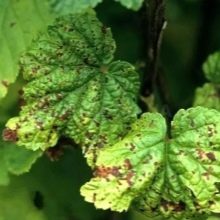








The comment was sent successfully.